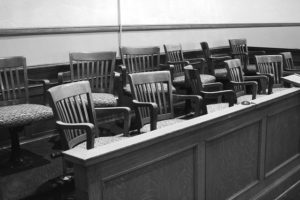What Makes an Expert?
Selecting experts for trial has always been a challenging task. The list of considerations—solid credentials, the ability to provide clear explanations and form strong connections with jurors, prior history of testifying, financial biases—is extensive. But once selected, their role as an expert was clear: to educate jurors about complicated subject matter and to convince jurors that they can adopt his/her opinions in the case, because the expert knows best.
Until recently, that approach worked. Experts were regarded as such and jurors would evaluate the experts and decide whom they believed. In post-trial interviews, jurors would explain why they preferred one expert over another, but few jurors, in our experience, would blithely dismiss an expert as lacking expertise. Because of this, you could find the most credible, likable, and persuasive expert possible and trust them to carry a great deal of your case.
Unfortunately, jurors’ notions on experts appear to be changing. Although the U.S. has a history of anti-intellectualism, that has previously meant that laypersons were suspicious of intellectuals, including scientists, but didn’t doubt that these experts were indeed experts. Over the past several years, however, we’ve noticed a trend for laypersons to treat experts as just another layperson with an opinion.
For example, in our research on vaccines, one layperson stated that the issue was complex, then commented: I’m not a scientist. I’m going to bet that most of you are not, either. I just prefer to procede [sic] on the side of caution and not blindly agree with the CDC, federal government, and medical industry. That is, she’s not a scientist, and she’s not going to agree with the scientists.
While this attitude is easy to recognize in issues such as vaccines or climate change, we have not found one science/medical area where laypersons don’t question or doubt the expertise of the experts. Sociologists believe this change probably has to do with the evolution of how society views and discusses science and technology. In addition to recent questions about the objectivity and “purity” of science, the ability to instantly access information on any topic allows laypersons to minimize the importance of another’s expertise and to push back against such expertise based on minimal information or education.
Because jurors’ evaluation and acceptance of experts is changing—our research indicates that jurors are less impressed by credentials than they were in the past and value other experiential factors instead—it is critical that you understand what criteria jurors are using currently to evaluate experts. Such up-to-date research is imperative both in choosing an expert for trial and in deciding how much of your case to entrust to them.
______________________
Tracey Carpenter, Ph.D. and Susan Chiasson, Ph.D. started Carpenter Trial Consulting in 2010. They each have extensive experience in high-stakes civil litigation and specialized expertise in how jurors analyze evidence, assess witnesses, and arrive at verdict decisions.
